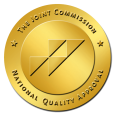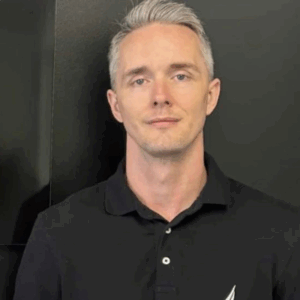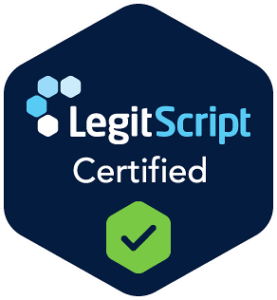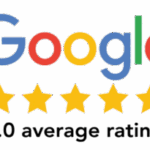

Heroin starts out as morphine from the opium poppy. Chemists tweak the molecule—adding two acetyl groups—so it can reach the brain much faster than regular morphine.
That speed matters: when heroin reaches the brain, it converts back to morphine almost instantly and floods opioid receptors, producing an intense surge of euphoria. The rapid “rush,” followed by deep relaxation, trains the brain to crave the experience again, setting the stage for heroin addiction even after a few uses.
Heroin’s potency sits roughly two to three times higher than prescription morphine, but the real danger lies in today’s street supply. Dealers often blend cheap fentanyl powder into heroin to boost profits and satisfy customers chasing a stronger high.
Because fentanyl can be 50 times stronger than heroin, a batch that looks and smells familiar may hide a lethal dose. Kentucky’s Office of Drug Control Policy reported that more than 1,400 residents died from drug overdoses in 2024; fentanyl was detected in most of those cases, and heroin frequently appeared alongside it.
For people in Louisville and surrounding counties, that means every bag bought on the street is a gamble between getting high and losing consciousness within minutes.
Once the body adapts to heroin, tolerance rises quickly. Users need larger or more frequent doses just to ward off withdrawal symptoms like bone-deep aches, vomiting, and uncontrollable chills that can start within six hours of the last hit.
This harsh cycle of reward and punishment makes quitting heroin tougher than tapering many prescription opioids. It underscores why evidence-based treatment, including medication and therapy, is essential for lasting recovery in Kentucky.

Heroin starts out as morphine from the opium poppy. Chemists tweak the molecule—adding two acetyl groups—so it can reach the brain much faster than regular morphine.
That speed matters: when heroin reaches the brain, it converts back to morphine almost instantly and floods opioid receptors, producing an intense surge of euphoria. The rapid “rush,” followed by deep relaxation, trains the brain to crave the experience again, setting the stage for heroin addiction even after a few uses.
Heroin’s potency sits roughly two to three times higher than prescription morphine, but the real danger lies in today’s street supply. Dealers often blend cheap fentanyl powder into heroin to boost profits and satisfy customers chasing a stronger high.
Because fentanyl can be 50 times stronger than heroin, a batch that looks and smells familiar may hide a lethal dose. Kentucky’s Office of Drug Control Policy reported that more than 1,400 residents died from drug overdoses in 2024; fentanyl was detected in most of those cases, and heroin frequently appeared alongside it.
For people in Louisville and surrounding counties, that means every bag bought on the street is a gamble between getting high and losing consciousness within minutes.
Once the body adapts to heroin, tolerance rises quickly. Users need larger or more frequent doses just to ward off withdrawal symptoms like bone-deep aches, vomiting, and uncontrollable chills that can start within six hours of the last hit.
This harsh cycle of reward and punishment makes quitting heroin tougher than tapering many prescription opioids. It underscores why evidence-based treatment, including medication and therapy, is essential for lasting recovery in Kentucky.
Heroin addiction is a serious and life-threatening condition. However, it can be successfully treated with professional help at our heroin addiction treatment in Louisville, KY. In addition, heroin can affect anyone, and it is most common in young adults.
The physical effects of heroin use include signs that heroin is taking its toll on the body, which begins to do damage soon after initial consumption. Some of the physical signs of addiction are known only to heroin users. However, over time, physical effects can become visible and apparent to others.
These physical signs and symptoms may include:
When heroin use takes over a person’s life, their whole world revolves around the drug. For this reason, there will usually be visible changes in it. Despite the many problems of heroin use, those addicted often continue to prioritize the drug over important commitments and relationships.
Behavioral signs and symptoms may include:
In our heroin addiction treatment in Louisville, KY, we understand the debilitating withdrawal symptoms that accompany the journey to recovery from heroin addiction. Withdrawal marks a crucial first step in the detoxification process, signifying the body’s attempt to rid itself of the toxins associated with prolonged heroin use. Our heroin addiction treatment provides comprehensive care to manage these symptoms, ensuring a safer and more comfortable detox process.
Withdrawal symptoms from heroin can vary in intensity depending on factors such as the individual’s level of dependency, duration of use, and overall health.
Common withdrawal symptoms from heroin may include:
These withdrawal symptoms typically peak within the first 24 to 72 hours after the last dose of heroin and gradually subside over about one week. However, some psychological symptoms, such as cravings and mood disturbances, may persist for longer periods, highlighting the importance of comprehensive addiction treatment and support.
We believe in providing a supportive environment where individuals can safely begin their journey to recovery. Our heroin addiction treatment in Louisville, KY, is designed to equip individuals with the tools they need to overcome addiction and rebuild their lives. Through personalized treatment for heroin addiction, medical expertise, and a focus on long-term recovery, we champion the resilience and strength of those we serve, guiding them toward a fulfilling, drug-free future.
Attempting a home taper rarely works with heroin’s short half-life and unpredictable street potency. Cutting back “just a little” can still unleash brutal withdrawal, while substitutes like pressed pills may be laced with fentanyl, undoing any progress and risking overdose.
Without a clinician to time dose reductions and manage cravings, most do-it-yourself plans collapse into a relapse-withdrawal loop that exhausts both the user and their family.
Attempting a home taper rarely works with heroin’s short half-life and unpredictable street potency. Cutting back “just a little” can still unleash brutal withdrawal, while substitutes like pressed pills may be laced with fentanyl, undoing any progress and risking overdose.
Without a clinician to time dose reductions and manage cravings, most do-it-yourself plans collapse into a relapse-withdrawal loop that exhausts both the user and their family.
Louisville Addiction Center focuses on partial hospitalization, intensive outpatient, and standard outpatient care, so it partners with licensed inpatient detox providers across Kentucky for the first five to seven days of stabilization.
Admissions staff can arrange a same-day bed when medical detox is indicated and then schedule a smooth hand-off into the Center’s Partial Hospitalization Program.
This bridge from “heroin detox near me” searches to structured therapy closes gaps that can trigger an immediate return to use.
Many people googling “Heroin Addiction Treatment Centers in Louisville, Kentucky” assume one facility handles every step from medically managed withdrawal through long-term therapy.
In practice, Kentucky follows a two-stage model.
Stage one is inpatient or hospital-based detox, where 24-hour medical teams stabilize vital signs, start buprenorphine if appropriate, and monitor for complications. Stage two is comprehensive rehab, where counseling, skills training, and medication management continue once the body is out of crisis.
Louisville Addiction Center specializes in stage two. The facility does not operate inpatient beds; instead, its expertise lies in three outpatient levels—Partial Hospitalization Program (PHP), Intensive Outpatient Program (IOP), and standard Outpatient Program (OP).
Each track can include Medication-Assisted Treatment to control cravings, along with individual therapy, group sessions, and trauma-informed care.
By collaborating with reputable detox hospitals throughout the state, Louisville Addiction Center ensures clients move from round-the-clock medical supervision to daily therapeutic structure without falling through the cracks.
Families comparing options should focus less on finding a single building that claims to “do it all” and more on confirming that each phase—detox and rehab—is delivered by specialists equipped for that specific leg of the recovery journey.
Louisville Addiction Center operates more like a heroin addiction rehab treatment and detox center in Louisville, KY, “ecosystem” than a one-size-fits-all clinic.
Instead of locking every client into the same timetable, the facility offers three outpatient levels—each able to include once-monthly buprenorphine or naltrexone injections, cognitive-behavioral therapy, family counseling, and trauma-focused care.
Clients move up or down the continuum as symptoms stabilize, schedules shift, or life stressors change.

Partial Hospitalization is the most structured option and the natural next step after inpatient detox. Clients attend the campus five days per week for roughly six clinical hours per day.
Mornings usually open with a medication-management check-in, followed by a process group that helps participants debrief cravings and wins from the previous 24 hours.
Late morning and early afternoon rotate through skills labs—CBT, DBT, and relapse-prevention workshops—plus one-to-one sessions with a licensed therapist.
Family counseling can be woven in once or twice a week, helping loved ones understand triggers and set healthy boundaries.
Because evenings are spent at home or in sober housing, PHP delivers residential-level intensity without an overnight stay.

When medical and emotional stability improve, most people step into IOP. Therapy hours drop to roughly nine to 15 per week, spread across three to five sessions that often meet in the late afternoon or early evening.
This flexibility lets clients return to a job, college classes, or parenting duties while still checking in with clinicians three or four days a week.
Group topics focus on real-world stress testing: handling payday triggers, navigating social events without heroin, and practicing communication skills with coworkers or partners. Medication adjustments continue onsite, so no extra clinic trips are required.

Yes. Standard Outpatient pares therapy down to one to three blocks per week—enough to provide accountability, medication refills, and a safety net during high-risk periods such as holidays or anniversaries. Clients fine-tune coping plans, address any lingering anxiety or PTSD, and reconnect with peer-support networks.
Because all three tiers share the same clinical team, transitions are seamless; if cravings spike, a client can step back up to IOP or PHP without switching providers. This fluid model keeps treatment aligned with real life, supporting steady progress from early stabilization to durable, heroin-free living.
Medication-assisted treatment and talk therapy work hand-in-hand at Louisville Addiction Center, creating a layered approach that research consistently links to higher retention and lower relapse rates.
| Tool | How It Helps | Where It Fits in Care |
|---|---|---|
| Buprenorphine (monthly Sublocade® injection) |
Partial opioid agonist that quiets withdrawal and curbs cravings without producing a heroin-level high. | Offered across Partial Hospitalization, Intensive Outpatient, and Outpatient tracks. |
| Naltrexone (monthly Vivitrol® injection) |
Opioid antagonist that blocks receptor sites—if a slip occurs, euphoria never arrives. | Ideal once detox is complete and cravings are moderate. |
Medication alone is never considered treatment; every prescription is paired with structured counseling.
Teaches clients to spot thought loops such as “I can’t cope without heroin” and swap them for realistic, recovery-focused beliefs.
Adds distress-tolerance and emotion-regulation skills that reduce impulse use during conflict or crisis.
Target the underlying memories and nervous-system responses that often drive compulsive opioid use.
Roughly half the people entering heroin rehab also meet criteria for anxiety disorders, post-traumatic stress disorder, or depression. Louisville Addiction Center screens every newcomer for these conditions and delivers CBT/DBT alongside medication management and mindfulness groups. Treating mental health symptoms and opioid dependence in the same clinical lane prevents one set of problems from derailing progress on the other.
Buprenorphine or naltrexone stabilizes brain chemistry so clients can show up clear-headed; CBT and DBT give them day-to-day coping tools; and trauma therapy lowers the emotional “temperature” that often precedes a relapse.
When anxiety or PTSD is part of the picture, the dual diagnosis pathway keeps those symptoms from sabotaging hard-won gains. The result is a balanced, evidence-based formula that mirrors national best practices delivered close to home in Louisville.
When you type “heroin addiction treatment near me” into Google, what you’re really asking is, “So what will my days look like if I sign up?” At Louisville Addiction Center, the routine shifts with each level of care, but the Partial Hospitalization Program (PHP) gives you a good feel for the daily rhythm.
| Time | Activity Example | Purpose |
|---|---|---|
| 9:00 a.m. | Medication check-in & vitals | Adjust buprenorphine or naltrexone, catch early withdrawal signs |
| 9:30 a.m. | Process Group | Debrief cravings, share victories, build peer accountability |
| 11:00 a.m. | Skills Workshop (CBT or DBT) | Practice trigger management, emotion regulation, and relapse planning |
| 12:00 p.m. | Lunch & informal peer support | Re-fuel, relax, compare coping tips |
| 1:00 p.m. | Individual Therapy | Tackle trauma history, anxiety, or PTSD one-on-one |
| 2:00 p.m. | Family Session or Psycho-education | Educate loved ones, rebuild communication, set boundaries |
| 3:00 p.m. | Wrap-Up & Goal Setting | Outline evening recovery tasks, confirm next-day med plan |
Morning groups leverage peer insight. Clients learn faster when they hear real-world examples from one another. Afternoon one-to-ones allow therapists to tailor strategies for specific traumas, co-occurring disorders, or situational stressors.
Because medical staff are on campus throughout the day, dose tweaks or side-effect checks happen immediately with no separate clinic trip required. This tight feedback loop keeps withdrawals controlled and cravings low, allowing you to focus on therapy rather than comfort.
Whether you remain in PHP, step down to Intensive Outpatient, or transition into standard Outpatient, this blend of medical oversight, skills practice, and personal counseling anchors each stage of recovery—turning “What will my day look like?” into a clear, confidence-building routine.
The duration of heroin rehab in Louisville, K, varies by medical need, insurance coverage, and individual progress, but most clients follow a three-tier path:
Partial Hospitalization Program (approximately 30 days). Daily six-hour sessions stabilize brain chemistry, refine medication doses, and build foundational coping skills.
Intensive Outpatient Program (about 6–12 weeks). Three to five evening or weekend blocks per week let clients return to work or school while maintaining close clinical contact.
Outpatient Program (flexible—often 3–6 months or longer). Weekly or bi-weekly check-ins preserve accountability and medication management as real-world pressures increase.
Timelines lengthen or shorten based on factors like the severity of heroin use, co-occurring anxiety or PTSD, the strength of a support network, and insurance authorizations. Some people transition through all levels in roughly 90 days; others keep a light Outpatient cadence during high-risk periods such as holidays.
Because Louisville Addiction Center’s programs share the same clinical team, moving up or down the ladder is seamless, ensuring every client spends exactly as much time in each stage as sustained recovery requires.
Pricing at heroin addiction treatment centers in Louisville, Kentucky, depends on the level of care you choose—Partial Hospitalization, Intensive Outpatient, or standard Outpatient—but Louisville Addiction Center works hard to keep each option accessible.
The admissions team accepts most major commercial insurance plans and can check your benefits in real time through a secure Verify Your Insurance form or a quick phone call. You learn up-front what your carrier is likely to cover and which copays or deductibles might apply, so there are no surprise invoices weeks later.
If you don’t have adequate coverage, the staff lays out transparent self-pay rates and flexible financing options before you enroll. They also walk families through Employee Assistance Programs and other third-party funding resources that can shrink out-of-pocket costs.
In short, the center removes as many financial barriers as possible, allowing the decision to start treatment to hinge on readiness and not a balance sheet.
Recovery is a marathon, not a sprint, so Louisville Addiction Center builds an aftercare roadmap before you step out the door:
By blending a lighter clinical touch with community resources and a concrete plan, Louisville Addiction Center extends the safety net of rehab into everyday life, increasing the odds that early momentum turns into lasting, heroin-free recovery.
A single conversation can launch your recovery journey. Dial 502-586-2433 to speak with an admissions specialist 24/7, or complete the form on our website for instant answers.
Unsure about costs? Click Verify Your Insurance to see real-time coverage details in under five minutes.
Once we’ve verified your coverage, we can often get you started as soon as today—or tomorrow at the latest—if that’s the best clinical move. Pick up the phone or hop on chat; your call is private, quick, and could be the first step toward real relief.
Get Family Support Now
We understand addiction affects the whole family. Our comprehensive family program helps rebuild trust and restore relationships.
Weekly Family Therapy Sessions
Educational Workshops
Support Groups
Communication Skills Training


Centers for Disease Control and Prevention. (2025, June 9). Heroin. Overdose Prevention. U.S. Department of Health & Human Services. Retrieved August 22, 2025, from https://www.cdc.gov/overdose-prevention/about/heroin.html
Centers for Disease Control and Prevention. (2025). Understanding the opioid overdose epidemic. Overdose Prevention. U.S. Department of Health & Human Services. Retrieved August 22, 2025, from https://www.cdc.gov/overdose-prevention/about/understanding-the-opioid-overdose-epidemic.html
Centers for Disease Control and Prevention, National Center for Health Statistics. (2025, March 17). FastStats – Drug overdoses. Retrieved August 22, 2025, from https://www.cdc.gov/nchs/fastats/drug-overdoses.htm
Kentucky Office of Drug Control Policy & Kentucky Injury Prevention and Research Center. (2025). 2024 Kentucky drug overdose fatality report. Commonwealth of Kentucky. Retrieved August 22, 2025, from https://odcp.ky.gov/Reports/2024%20Drug%20Overdose%20Fatality%20Report.pdf
Centers for Disease Control and Prevention. (2025, August 7). SUDORS dashboard: Fatal drug overdose data. U.S. Department of Health & Human Services. Retrieved August 22, 2025, from https://www.cdc.gov/overdose-prevention/data-research/facts-stats/sudors-dashboard-fatal-overdose-data.html
Kentucky Justice & Public Safety Cabinet. (2023). Gov. Beshear: Overdose deaths decline for second-straight year. Commonwealth of Kentucky. Retrieved August 22, 2025, from https://justice.ky.gov/News/Pages/24overdosefatalityreport.aspx









Centers for Disease Control and Prevention. (2025, June 9). Heroin. Overdose Prevention. U.S. Department of Health & Human Services. Retrieved August 22, 2025, from https://www.cdc.gov/overdose-prevention/about/heroin.html
Centers for Disease Control and Prevention. (2025). Understanding the opioid overdose epidemic. Overdose Prevention. U.S. Department of Health & Human Services. Retrieved August 22, 2025, from https://www.cdc.gov/overdose-prevention/about/understanding-the-opioid-overdose-epidemic.html
Centers for Disease Control and Prevention, National Center for Health Statistics. (2025, March 17). FastStats – Drug overdoses. Retrieved August 22, 2025, from https://www.cdc.gov/nchs/fastats/drug-overdoses.htm
Kentucky Office of Drug Control Policy & Kentucky Injury Prevention and Research Center. (2025). 2024 Kentucky drug overdose fatality report. Commonwealth of Kentucky. Retrieved August 22, 2025, from https://odcp.ky.gov/Reports/2024%20Drug%20Overdose%20Fatality%20Report.pdf
Centers for Disease Control and Prevention. (2025, August 7). SUDORS dashboard: Fatal drug overdose data. U.S. Department of Health & Human Services. Retrieved August 22, 2025, from https://www.cdc.gov/overdose-prevention/data-research/facts-stats/sudors-dashboard-fatal-overdose-data.html
Kentucky Justice & Public Safety Cabinet. (2023). Gov. Beshear: Overdose deaths decline for second-straight year. Commonwealth of Kentucky. Retrieved August 22, 2025, from https://justice.ky.gov/News/Pages/24overdosefatalityreport.aspx









Get Family Support Now
We understand addiction affects the whole family. Our comprehensive family program helps rebuild trust and restore relationships.
Weekly Family Therapy Sessions
Educational Workshops
Support Groups
Communication Skills Training


Hear directly from those who have walked the path to recovery. Our patients’ stories highlight the compassionate care, effective programs, and life-changing support they’ve experienced. Let their journeys inspire you as you take your first steps toward healing.
Louisville Addiction Center is helping people in Kentucky overcome addiction and mental health challenges.